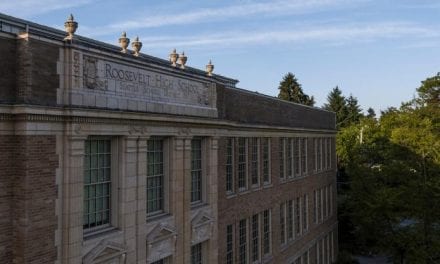By Sree Roy
For several decades, sleep scientists have been sounding the alarm that middle and high schools start too early in the morning. There is overwhelming evidence that requiring teens to arrive at school before 8:30 am interferes with their circadian biology, resulting in poorer test scores, more car accidents, and other unnecessary harm.
But executing any kind of bureaucratic change is typically a slog. Here, science is up against logistics such as school bus scheduling and the timing of after-school activities. Only in October 2019 did California became the first state to require that middle and high schools start later, and the new law allows for a 3-year implementation delay.
But now, due to the coronavirus pandemic, schools are embracing later morning start times at a shockingly fast pace. “Since most of California is starting in distance learning, how about trying later start times? @paloaltounified is using this as a chance to start secondary schools no earlier than 9:00. I have some mixed feelings, but there will (hopefully) never be a better chance to try,” said Don Austin, superintendent of Palo Alto Unified School District, on Twitter, and the school district later confirmed that remote learning live instruction for its 6th through 12th graders would start at 9 am or later.
[RELATED: Healthy School Start Times: A Call to Action for Sleep Professionals]
Even for districts maintaining their early start times, the elimination of student commutes and lack of in-person extracurriculars means these teens too have the option for more circadian-aligned sleep than in a typical semester.
Already since coronavirus-related upheavals began around March 2020, this large unplanned sleep experiment has been noticed by some households. “Families are…telling us that their lives have literally been transformed because their teenagers are going to school online and therefore not having to wake up at the crack of dawn to get to school on time. And suddenly, the struggles to get their kids out of bed in the morning are just gone,” said Terra Z. Snider, PhD, executive director and co-founder of nonprofit Start School Later, in a YouTube video. “Teenagers are getting more sleep and families are reporting that in spite of all the increased anxiety and uncertainly and restraints, their teenagers actually seem happier, more communicative, and less moody.”

Of course, in many cases, this reprieve will be temporary. For example, at Virginia’s Prince William County Public Schools the bell schedule starts at 8:30 am “as long as the majority of students are virtual,” according to the website. But, “if we were to move to the 50% model for the second quarter in November, then high school will revert to the 7:30 am start time.”
At worst, teens get a temporary extra health boost of circadian-aligned sleep. At best, as additional scientific evidence pours in from around the country and as parents and students experience the real-life benefits of healthy sleep on education, perhaps long-lasting and faster adoption of later school start times for teenagers will become a long-term reality.
Sree Roy is editor of Sleep Review.




